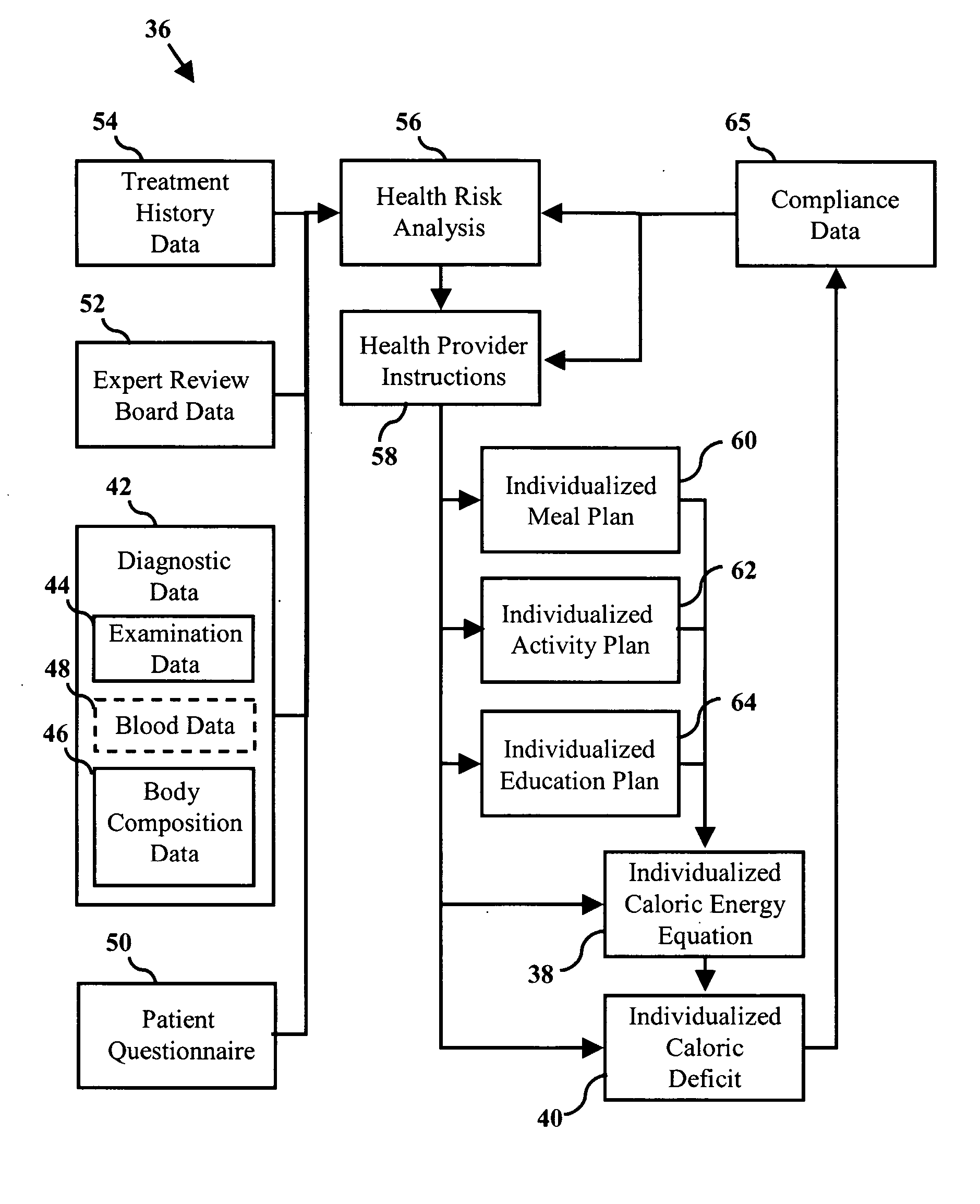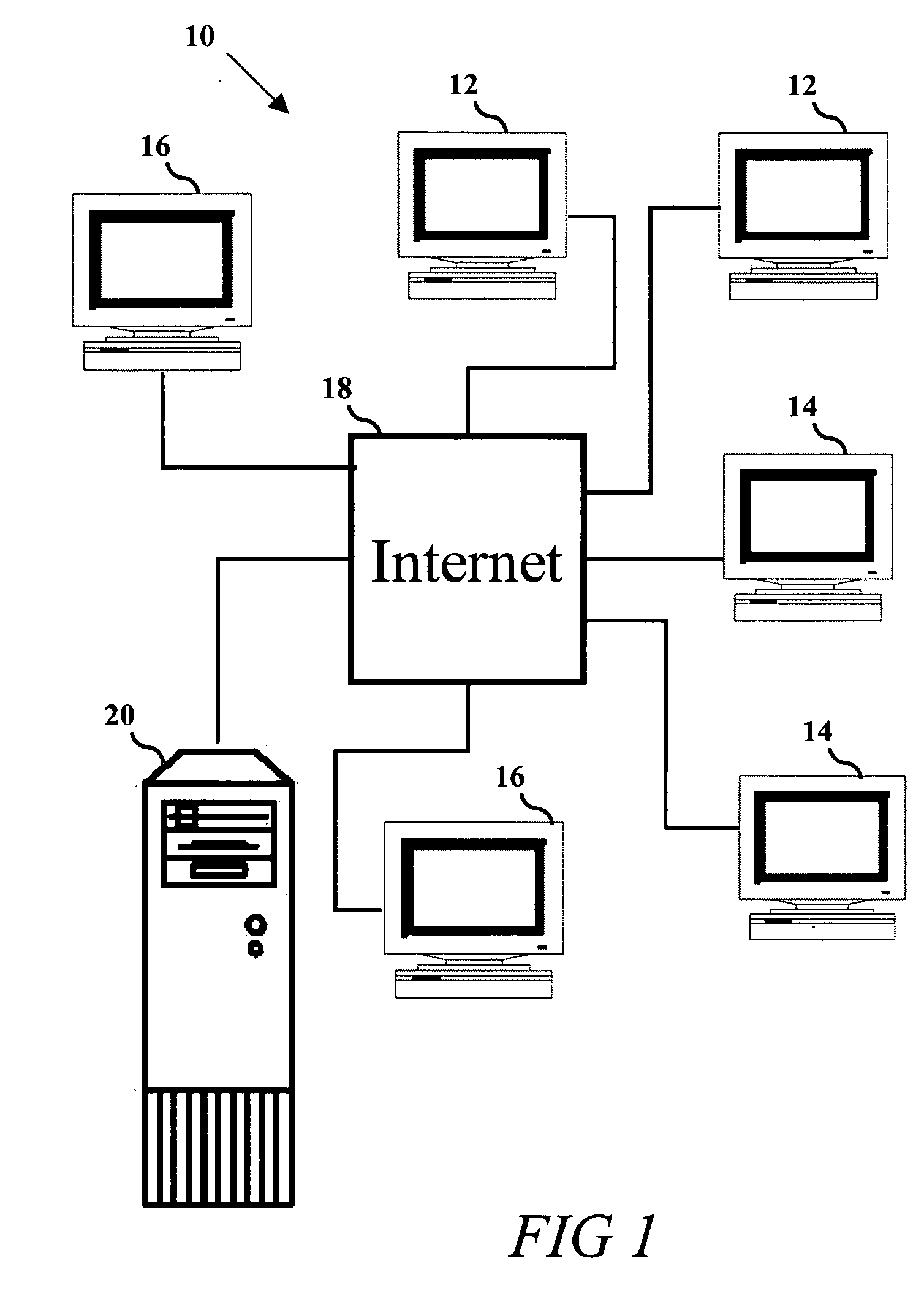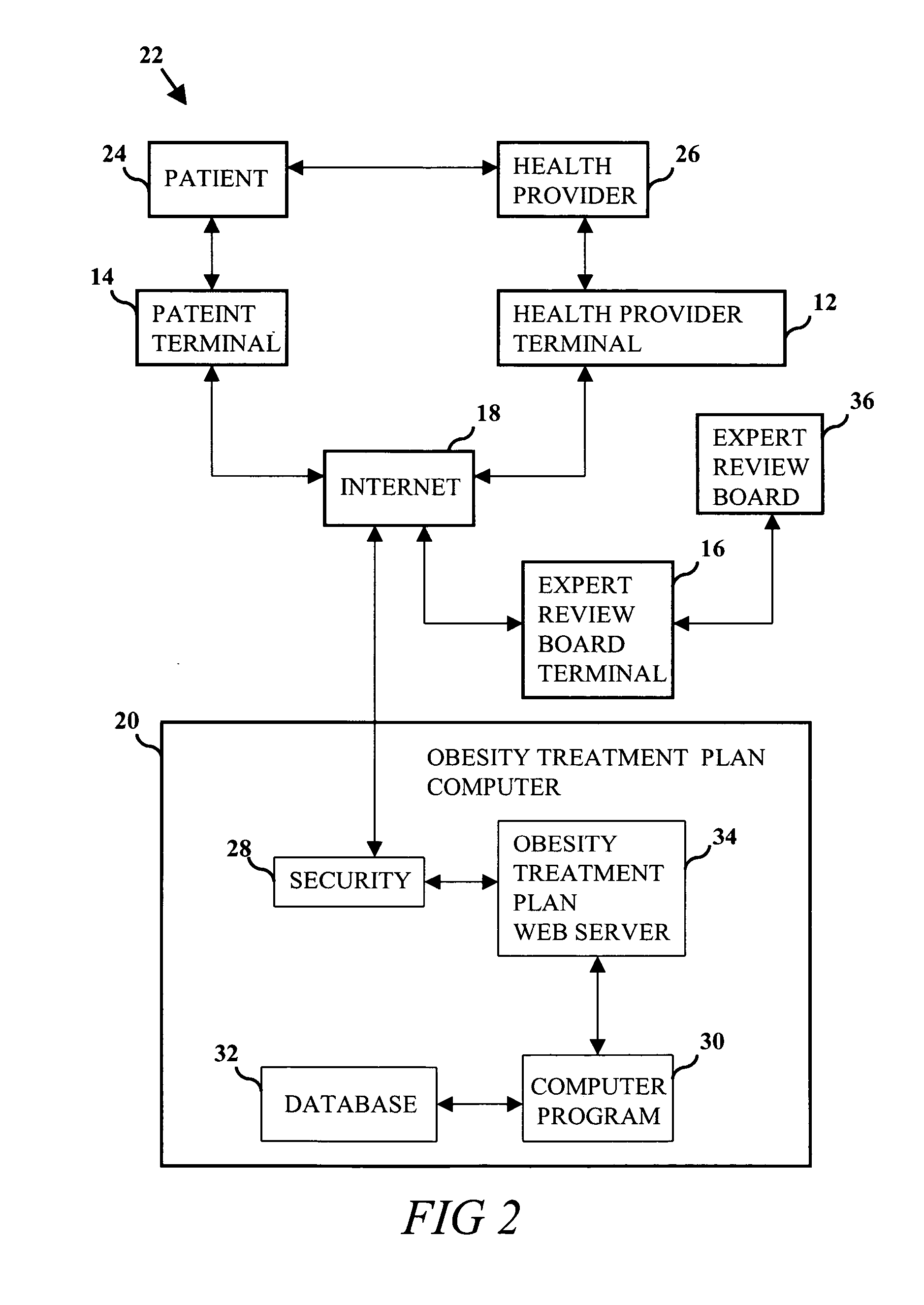System and method of individualized mass diagnosis and treatment of obesity
a mass diagnosis and mass treatment technology, applied in the field of system and method of individualized mass diagnosis and treatment of obesity, can solve the problems of increasing healthcare costs, unsustainable costs, and significant impairment of health,
- Summary
- Abstract
- Description
- Claims
- Application Information
AI Technical Summary
Problems solved by technology
Method used
Image
Examples
Embodiment Construction
[0052] Such obesity treatment methods having those features and advantages as well as other features and advantages, have now been developed. The invention comprises an individualized system and method of mass diagnosis and treatment of obesity that is optionally configurable for a plurality of patients and health providers. The system and method provides a computer and relational data storage system for operating a computer program and secure web site on the internet. The secure website is accessed and displayed using a plurality of computer terminals. The web site comprises a plurality of individualized obesity treatment web pages related according to the computer program instructions, where the computer program instructions perform the steps of correlating information input from users with information stored in the relational database for displaying results on a plurality of computer terminals.
[0053] The obesity treatment method comprises the steps of using an individualized cal...
PUM
 Login to View More
Login to View More Abstract
Description
Claims
Application Information
 Login to View More
Login to View More - R&D
- Intellectual Property
- Life Sciences
- Materials
- Tech Scout
- Unparalleled Data Quality
- Higher Quality Content
- 60% Fewer Hallucinations
Browse by: Latest US Patents, China's latest patents, Technical Efficacy Thesaurus, Application Domain, Technology Topic, Popular Technical Reports.
© 2025 PatSnap. All rights reserved.Legal|Privacy policy|Modern Slavery Act Transparency Statement|Sitemap|About US| Contact US: help@patsnap.com



